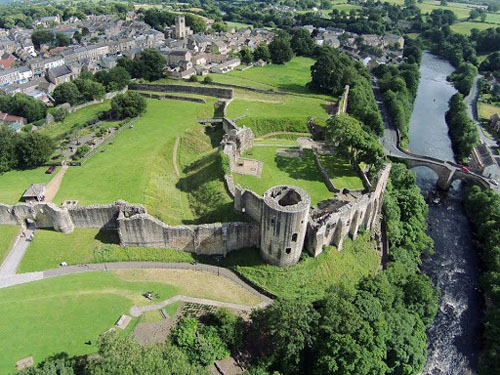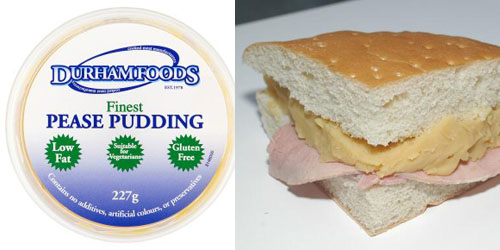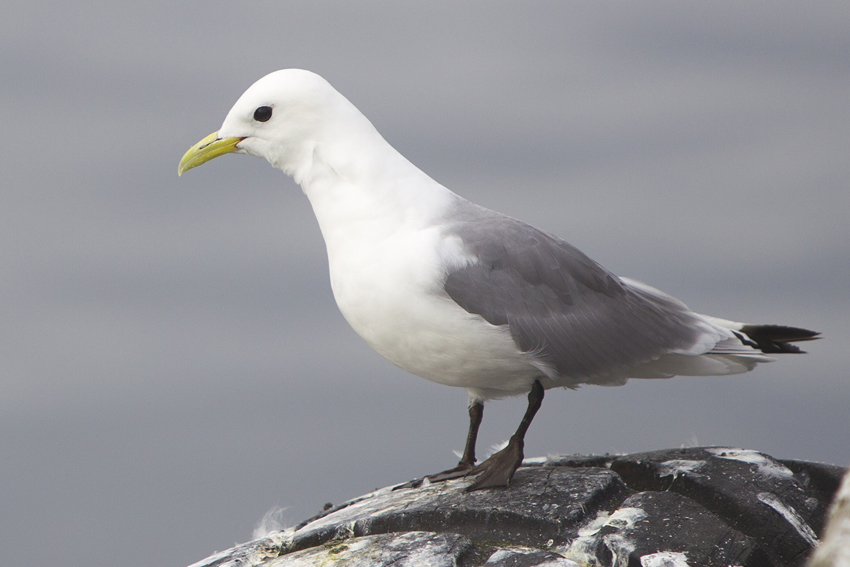




Back to the Durham Page

- The Royal Connection
- Durham Eats
- Owlbut's Birdwatch
- Durham VIPs
 Barnard Castle sits on a high rock
overlooking the River Tees. It is now a ruin. It gets its name from its founder Bernard de Balliol. There is also a town of Barnard Castle nearby. The royal
connection began in about 1300 when Edward I gave it to the Earl of Warwick. One of his ancestors by marriage was Richard Neville who, after a while, became a
supporter of Edward IV and helped Edward in his fight to become King of England during the Wars of the Roses.
Barnard Castle sits on a high rock
overlooking the River Tees. It is now a ruin. It gets its name from its founder Bernard de Balliol. There is also a town of Barnard Castle nearby. The royal
connection began in about 1300 when Edward I gave it to the Earl of Warwick. One of his ancestors by marriage was Richard Neville who, after a while, became a
supporter of Edward IV and helped Edward in his fight to become King of England during the Wars of the Roses.
Later, Warwick changed sides to help Henry VI get his throne back but one year later Warwick was killed. Having helped two people take the throne
he became known as Warwick the kingmaker. After Warwick's death, Richard, Duke of Gloucester, took possession of the castle and it is said it became his favourite
residence. He later became Richard III, reigned for two years, was killed at the Battle of Bosworth Field and then took up residence in a car park in Leicester
where his body was found a few years ago.
The castle reverted to the ownership of the Neville family who enlarged and improved it. However they upset the crown in 1569 during the Rising of
the North and Queen Elizabeth I took possession of the castle and in 1626 it was sold to Sir Henry Vane who was also given another Neville castle, namely Raby
castle. Vane much preferred Raby and so Barnard Castle was not only abandoned but much of it was removed to improve Raby.
The ruins can still be seen today, sometimes as an eye sight test. If you are under 14 or 15, ask your parents or grandparents to explain that comment.
![]() Back to the top
Back to the top
 Pease Pudding, which as a child I thought
was Peas Pudding and wondered what you could make for pudding from those little green, round things, is a North East England speciality and as I found a company
called Durham Foods who make it, I thought it belonged here. The first thing to say is that it is certainly not a pudding. It is more of a paste and, as you can
see, is often used along with some ham to fill a roll or a stottie (more later)
Pease Pudding, which as a child I thought
was Peas Pudding and wondered what you could make for pudding from those little green, round things, is a North East England speciality and as I found a company
called Durham Foods who make it, I thought it belonged here. The first thing to say is that it is certainly not a pudding. It is more of a paste and, as you can
see, is often used along with some ham to fill a roll or a stottie (more later)
It is made by cooking yellow split peas, which have been soaked overnight, either in water or, in some cases, with a shank of ham. Often an onion and
some carrots may be added, Once the mix has boiled, usually for an hour or so, the vegetables and any spices you might have added, are removed (as is the ham joint)
and the mixture is blended to a fine paste. I have to admit to never having tried this. As to why it is made with peas and
called pease, I have found no answer.
To return to the stottie, this is another North East England thing so you're getting two for one this week, and is basically a type of bread made
into a flat, round loaf with an indent in the middle. It is heavy and dense because it has only been allowed to prove once rather than the usual twice. Stotties
are usually eaten split and filled, a common filling is ham slices and pease pudding. This time I do know how it might have got its name, in fact another two
for the price of one. To "stott" in the dialect up in the North East, means to bounce and if you dropped a stottie, as it is heavy, it would bounce or it could
be because it was cooked by dropping it on to the oven floor. Who knows?
![]() Back to the top
Back to the top
Kittiwakes are coastal, medium-sized gulls who can been seen almost anywhere around the English coast. They will arrive at the
breeding colonies in late February and stay until August. They can then be seen, in autumn, flying down the coast and they spend the winter months out at sea.
They have a small yellow beak and black eyes. They have a grey back with white underneath. Their legs are short and black. When they fly, the ends of their
wings are completely black. Their population is declining and there are about 380,000 breeding pairs in the UK.
Kittiwakes are 40 cms in length, have a wingspan of just over 100 cms and weigh between 300 and 500 grams. They like to eat fish, shrimps and worms.

Seven random people who were born in Durham in the last 100 years:-
Rowan Atkinson (Comedian/Actor/Writer), Steph Houghton (Footballer and England Captain), Si King (Chef - Half of the Hairy Bikers), Gina McKee (Actor),
the late David Bellamy (TV Presenter/Botanist/Environmental Campaigner), Charlotte Riley (Actor) and the late Sir Bobby Robson (Footballer/Manager).
![]() Back to the top
Back to the top

